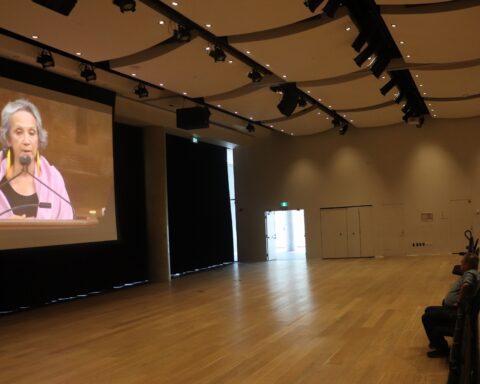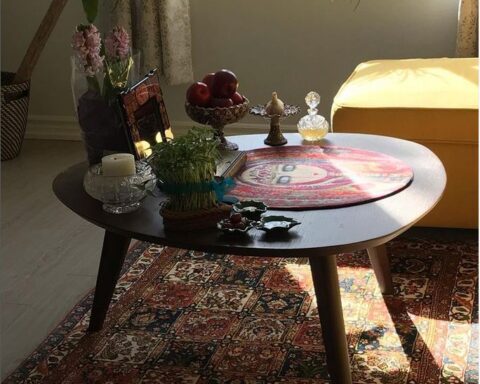The Juggler’s Children: A journey into Family, Legend and the Genes that Bind Us, a Governor General’s literary award finalist by Toronto-based journalist and author Carolyn Abraham, is a fascinating personal journey into the author’s family history, an introduction to the science of genetics and genome research, as well as being a delightful travelogue through modern-day India and Jamaica. The book is also an incisive look — without getting bogged down in the minutiae of history — into the ongoing legacy of colonialism and slavery, which has had, and continues to have, an effect on all of us.
Abraham, whose rich racial heritage includes India, Portugal, England, Jamaica and China, started her quest quite young, searching for answers to the questions most children of mixed-race ancestry invariably ask their parents at some point in their lives, “What am I”? The question, “Who am I” most likely comes later, but for many mixed-race children, particularly those who grow up in communities where the majority of the population is from mostly homogenous racial and cultural backgrounds, the question “What am I?” inevitably comes early.
Interestingly, this is more likely to happen in a country like Canada where the policy of multiculturalism encourages us to celebrate our unique cultural heritages. For children from mixed-race ancestry, particularly those of colour, this was often problematic as families did not discuss their racial origins, for very practical reasons, as Abraham outlines in her book.
It was deemed preferable to keep things vague, and identify if at all possible with the dominant or majority group.
After all, one usually wants to be on the side that has the power.
Personal history
Nonetheless, human beings appear to have a deep desire to know where we come from, understand our past, and develop a sense of self based our personal histories. Perhaps after food, sex, and a need to love and be loved, it is the strongest imperative we all share. Ancestry sites, including the ever-popular one run by the Mormon Church in Salt Lake City, are the second most popular sites after — you guessed it — porn.
Abraham, who was born in England and moved to Canada with her parents when she was a child, realized she was “different” from her classmates in her suburban Toronto school by virtue of her darker skin and the food she ate at home. But she could not get clear answers, or any that made sense to her, from her parents about her racial heritage or ancestry. She knew the family origins were in India and family stories suggested primarily European, mainly Portuguese and English ancestry, but intriguingly Chinese and Black Jamaican as well. Yet, there was no clear indication of Indian family ancestry in family records, although the physical manifestations in skin colour and facial features were obviously there. When she eventually got around to asking her parents “What am I?” she was told, “Tell them we’re English.” This was not very satisfying to Abraham as it did not explain why she looked the way she did, nor did it help understand the spicy and exotic food favoured by her parents.
Abraham’s journey, undertaken with the investigative skills required to be an award-winning science journalist — she is the health and science columnist for the Globe and Mail newspaper — and the passion which accompanies her personal quest, is full of wit, compassion and a genuine warmth and affection for the people she encounters along the way. She also has an obvious gift for storytelling, and the book held me captive like any good detective story. There are amusing stories involving the rediscovery of long lost eccentric family members and discovering secrets and skeletons in the family DNA closet, as well as very detailed descriptions of the incredible complexities of human genetics. On several occasions, I felt it necessary to re-read passages relating to the science of genome research, and they were always rewarding.
Genealogy and genetics
Abraham’s style of cutting back and forth between her personal journey of discovery and family stories, and her investigation of the cutting-edge science of genetics, with its promise of revealing truths either long lost or never recorded, is extremely effective in keeping the narrative moving and compelling.
She reveals through her own family’s experiences how it was common in India during British rule for people of mixed Indian and British ancestry, to identify themselves as “English,” differentiating them from the native populations and potentially giving them privileged treatment by the British with accompanying social and economic advantages.
This was particularly true for the Anglo Indian community, who were likely the first mixed-race community who came to see themselves as racially distinct and organized themselves in order to advocate for their rights. They were both exploited by the British colonial rulers and benefited at certain points under colonial rule because of their mixed English and Indian ancestry, playing a key role in maintaining the efficient functioning of the British administration in India. As Abraham outlines, they were the “backbone of the Raj” in India, serving as managers in key institutions such as the Indian Railways, the Post and Telegraph and Customs and Excise, as well as the military.
This naturally caused bad blood between them and their Indian peers, who understandably resented the privileged working positions the Anglo Indians were given at various points during British rule. Naturally, it was to their advantage to identify with the rulers, which earned them the resentment of the Indians, particularly those who were determined to rid India of colonial rule. It also earned them the scorn of the British, who saw themselves racially and culturally superior to the Anglo Indians, and as has been well documented, pretty much everyone else. The British also feared their growing numbers, and their expertise, as a number of successful revolts in other colonies in the Caribbean and the Americas had been led by people of mixed-race backgrounds.
A different time
Fortunately, we now live in a time where for the most part we are not compelled out of shame or a desire to improve or maintain our social standing to deny our mixed race origins. It wasn’t that long ago when people who had mixed racial backgrounds, especially those who were in a position due to colour and physical characteristics, to “pass” for white, feeling compelled to do so. There are numerous stories about this, from virtually every country that experienced European colonialism — India, South East Asia, Africa, Australia, and all parts of the Americas.
One of the saddest and most poignant is the story about Merle Oberon, the movie star in the 40’s and 50’s, who was born in India, who felt compelled to deny her Anglo-Indian heritage and maintained that her mother, who she loved dearly, and brought to live with her in her mansion in Hollywood, was her maid servant, for fear of revealing her Indian heritage. It also likely prevented her from having children as she was afraid her racial heritage would be exposed. The novel “Queenie” based closely on her life, by her nephew-in-law Michael Korda (who is the nephew of Alex Korda, a famous film producer in Britain who was Oberon’s first husband) is an interesting look at racial politics in Britain and India prior to and post independence, as well as an insider’s look at the film industry in Britain and Hollywood in the 40’s and 50’s.
Abraham works in some solid research on the Anglo Indian community and its history, and the role it played during the British Raj in India. It has most often been portrayed as a mostly sadly diminished community in spirit, in it’s presence in India, and in its diaspora mainly in Britain, Australia and Canada, following Indian independence in 1947. Refreshingly, rather than repeating the old tropes of the community as sad remnants of the Empire, Abraham points out the achievements of many members of the community both in India and abroad, in addition to their reputation for throwing great parties and being good dancers! This, despite the discrimination and exploitation they suffered both during colonial rule and following independence in India and in Britain, where many Anglo Indians emigrated. Recent international reunions of Anglo Indians in India, Britain, Australia and Canada indicate a strong desire by community members, young and old, to maintain community ties and keep their heritage alive.
Russell Peters
It should also be mentioned that Canadian-born comedian Russell Peters who has an international following and is of Anglo-Indian ancestry — his parents were part of the Anglo Indian diaspora following Indian Independence — writes incisively and sympathetically about the community in his recent autobiography Call me Russell.
Through her search for her Black Jamaican maternal great grandfather, Abraham recounts in several very moving passages that despite the incredibly painful injustices black men were forced to endure, especially as slaves, the women had a far more cruel existence as they were not only physically exploited as house servants and field labour, but were also vulnerable to sexual exploitation. They had to bear and raise the children, often the result of being raped, and to survive, forced into ongoing sexual relationships with men who were their slave masters. These are all stories we have heard before, of course, but somehow Abraham’s deeply personal and poignant retelling made them extremely moving and intensely felt. These powerful passages are juxtaposed with skillfully drawn portraits of long-lost family members, who Abraham tracked down through both genetic testing and archival research during her travels with her parents and husband in Jamaica.
The search for the descendants of a Jamaican sea captain who sailed to India in the late 1800’s and married Abraham’s maternal great grandmother, who was of Portuguese and Indian ancestry, provide amusing anecdotes and reveal the tragic stories about the legacy of slavery still being played out in Jamaica and in many parts of the world, as well as the rich cultural heritage that exists in present day Jamaica.
I grudgingly put the book down when other duties called, but could not wait to immerse myself again into the world she had constructed. I was genuinely disappointed when I came to the end. Fortunately, it is not the end of the story. Abraham is still on the DNA trail of her paternal great grandfather’s origins in China, the mysterious “juggler” from the title of the book who fled to the hills of southern India to avoid being prosecuted for killing a man. He was given the name Abraham by a Catholic priest who performed the ceremonies when he converted to Christianity.
Ultimately, the book makes the point that genome research reveals our common ancestry as humans, and debunks of the notions of racial and cultural superiority that have plagued humankind since the beginning of recorded history and incredibly continues to do so today. Abraham provides several examples of how some people, despite outwardly intellectual sophistication, still continue to cling to outmoded attitudes to justify their beliefs in the superiority of their tribal or racial group. She does this to her credit, deftly and with a light touch, without having to resort to preachy rhetoric.
Hopefully, Abraham will continue the search for her family’s ancestry through both on-the-ground archival research and through the rapidly developing genetic methods now available. One can only hope that she will share the rest of her journey with us in another book, soon. I for one am looking forward to Abraham’s quest in China for the origins of the mysterious juggler. Hers is a fascinating and richly revealing story, and one that has strong resonance and importance in our increasingly diverse Canadian society.
The Juggler’s Children: A journey into Family, Legend and the Genes that Bind Us, is published by Random House and is currently available in hardcover. Paperback will be released in April 2014. Our reviewer, Paul de Silva, is a film and TV producer and a doctoral student in the Communications and Culture Program at Ryerson University and Co-director of the International Diaspora Film Festival.




